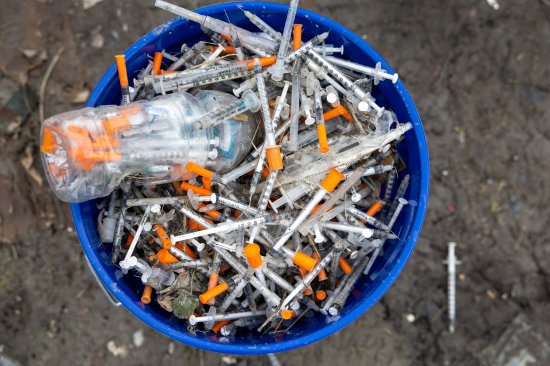
A new study found that overdose deaths in the Pacific Northwest have increased despite decriminalization laws, not because of them.
Oregon’s drug decriminalization experiment isn’t popular at the moment. Measure 110, the citizen initiative that removed serious legal penalties for all illicit drug possession and directed millions of dollars of state resources toward harm-reduction and treatment programs, has been painted by local and national media as insufficient at best and destructive at worst since its implementation in 2021. News stories this summer portrayed Portland as afflicted by rising opioid overdose rates and suggested that Measure 110 played a role in their increase. Though 58% of Oregonians voted for the legislation in 2020, in an August poll from Emerson College 64% of respondents said they were in favor of walking back at least parts of the bill.
[time-brightcove not-tgx=”true”]Initial data from the first post-Measure 110 year, however, tell a different story. According to a paper out Sept. 27 from researchers at NYU’s Grossman School of Medicine, there is no evidence that Measure 110 was associated with any change in fatal drug overdose rates in Oregon. The same is true of a since-abandoned decriminalization program in adjacent Washington State. “Overdoses were going up before, and overdoses continued to go up,” says Corey Davis, an assistant clinical professor at the NYU’s Center for Opioid Epidemiology and Policy and a co-lead author on the paper. “It seemed that there was some opportunistic pointing at Measure 110” in light of continued increases, he says, but the trend likely continued despite the policy change, rather than because of it.
The new study, published in JAMA Psychiatry, follows an August paper from Davis and his colleagues, which showed that in the first years of both Oregon and Washington’s policies, arrests for drug possession fell dramatically, with no commensurate increase in arrests for violent crimes.
More From TIME
Read More: Decriminalizing Opioids Will Save Countless Lives
Fatal overdoses, of course, aren’t a perfect proxy for all the dangers of drug activity. Spruha Joshi, an assistant professor in epidemiology at the University of Michigan School of Public Health and co-lead author of the study, acknowledges the difficulty of capturing a comprehensive look at the public-health impacts of Measure 110 and Washington’s analog. “We really were unable to look at non-fatal overdose, even though that was something that we had originally set out to do and which is an important outcome,” she says. That’s because these sorts of events are not tracked consistently, given that people who recover from overdoses often do not go to a hospital or police station. The evidence the team does have, however, is robust, thanks to their use of what’s known as a static control method. Rather than comparing a state like Oregon to another existing state with a different legal landscape and history, this method uses information from some number of states (in this case, 13 for Oregon and 18 for Washington) to build a statistically representative version of the state in an imagined world in which the drug decriminalization law had not been passed.
Important, too, says Joshi, is that the year of data included in the study was collected without half of Measure 110 in operation. Aside from decriminalization, Measure 110 allocated more than $260 million in tax dollars from Oregon’s legal cannabis industry to harm-reduction and treatment centers for substance users statewide, but “most of that money didn’t start flowing until almost the end of our study period,” says Davis. So there are no good data yet on how the full two-pronged approach of Measure 110 may have changed overdose rates.
Even with no harm done, Oregon has yet to see the kinds of positive changes that Measure 110’s supporters hoped for. In 2021, the year that Measure 110 went into effect, Oregon saw a 41% increase in fentanyl-related overdose deaths, a deviation from the national average of 16% seconded only by Washington.
Many Oregonians consider Measure 110 a failed experiment. An ongoing study has found widespread opposition among the state’s police officers, and in mid-September, a group of business and political leaders filed voter initiatives to walk back decriminalization, including making any amount of methamphetamine, fentanyl, and heroin illegal to possess. Advocates of decriminalization see these pushes as attempts to kill a new strategy before it’s even had a chance to work, and say that complaints about increased drug activity throughout the state should prompt lawmakers to build upon Measure 110 rather than abandon it.
Though the new data seem to support continuing to give decriminalization a chance, the challenge of discerning growing pains from failure is difficult with lives at stake.
“There’s always the hope that states function as laboratories of democracy, and when one state does something that makes sense and seems to work, that other states will adopt it,” says Davis. “Arrests went way down, overdoses didn’t change: To me, that’s an improvement over the previously existing system.”